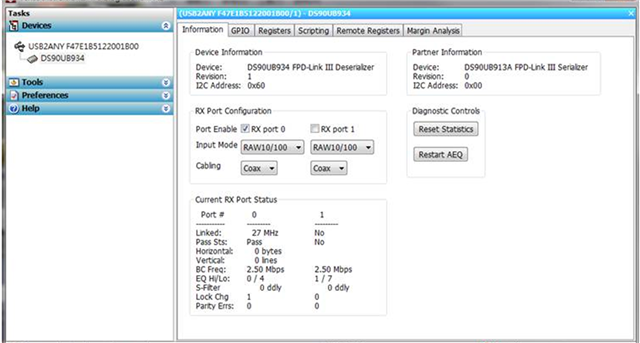Hi Team,
I think 933 & 913 is pin to pin, in theory it should be exactly the same, cause according to the theory, 933 and 914 can be connect !
But currently we try to use the customer's 914 board to connect with the 933 camera, but the camera cannot light up!
The possible reason is that the CLK of the sensor of TI933 is sent by 933? or something need to reconfirm ?
933 camera link
Customer's 914 board SCH






